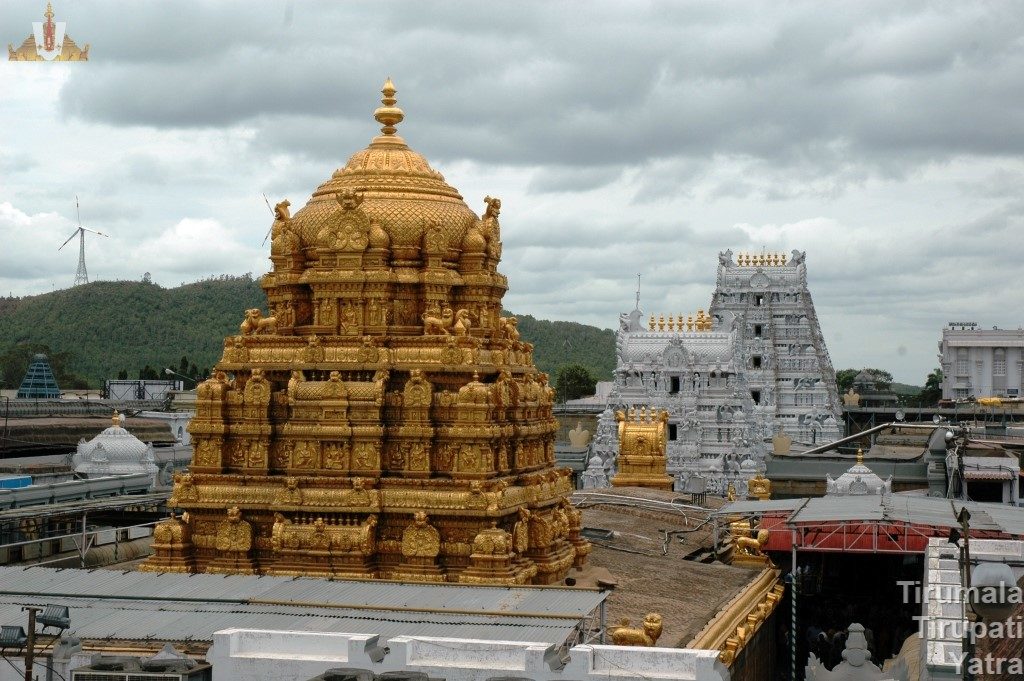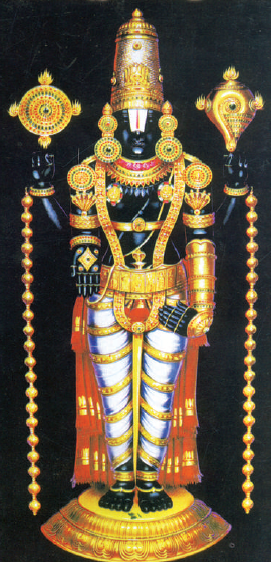Pancha Berams of Tirupati Balaji
Lord SRINIVASA is
- the heavenly Wishing Tree (kalpa taruvu) to those who yearn for Him,
- gold to those who hold his hand,
- advance honorarium to those who worship Him,
- a diamond on hand to those who serve Him,
- the Ultimate God to those who conceive of Him,
- fulfiller of desires and an unforgettable God,
- a form of ananda to those who are lost in his praise,
- a miraculous doctor who gives issues even to the barren,
- a resident of Ananda Nilaya and
- a saviour to the grief-stricken.
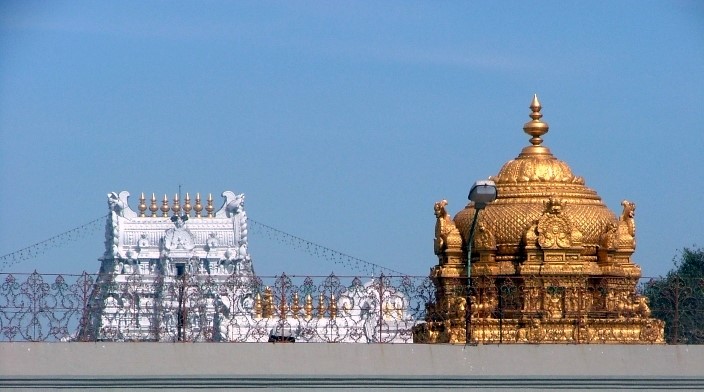
Utsavams / Sevas
That is why, the devotees continuously stream to Tirumala hills for a glimpse of the Lord who is like gold in the fist. Some choose to participate in the early morning ‘Waking up Service’ (Suprabhata Seva) of the Lord, and offer worship (Archana) and naivedyam (food).
Some participate in the daily ritual of the Lord’s marriage to witness the glory. (Kalyanotsavam)
Some participate in Poolangi Seva (Garlanding Service) and Tiruppavada Seva (offering of huge heaps of tamarind rice and other prasadas to the main deity as a veil between the deity and the devotees on Thursday), while some others participate in Abhisheka Darshan (ablutions) of the Lord on Friday and go into raptures.
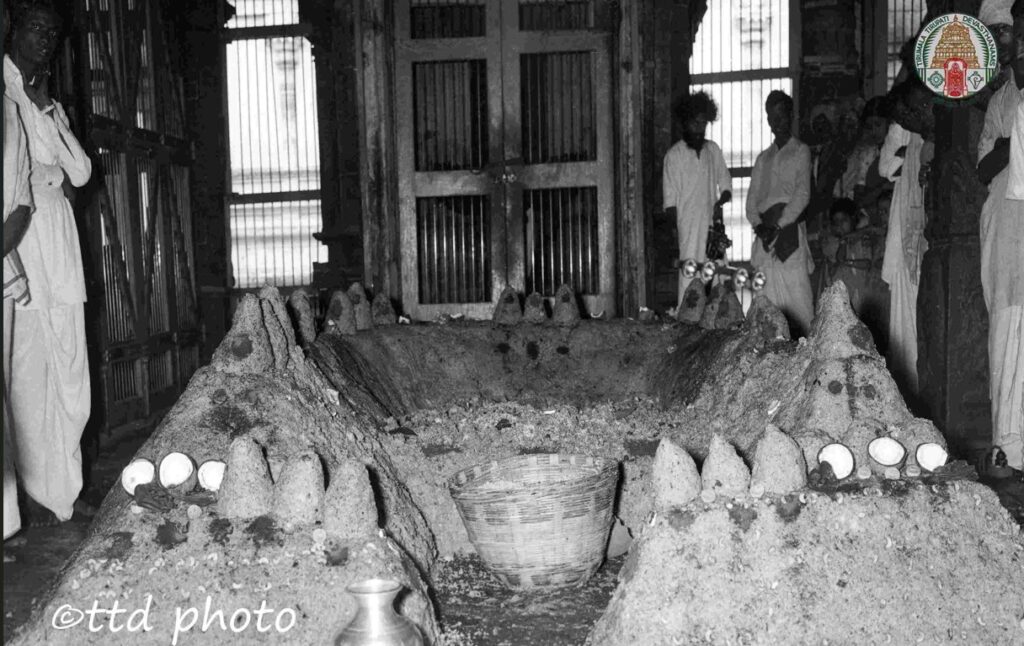
Thus devotees participate in kalyanotsavas, Brahmotsavas, Vasanthotsavas and other ceremonies to receive the grace of the Lord.
In this context, the devotees, however, get a genuine doubt. Is the deity of Lord Srinivasa the same in all these utsavas or different? If different, how many deities are there? How distinctly are the services offered to each of them? Let us look into the details to dispel these doubts, to some extent.
The self-manifested deity of Lord Sri Venkateshwara in Tirumala shrine receives rituals of worship and offerings as per the most ancient Vaikhanasa Agama. Devotees attribute to God whatever is relevant to them and follow a prescribed method of worship (Upasana). That is why, we conduct services of bathing (abhishekam), worship (archana), feeding (naivedyam), the procession (ooregimpu), going to bed (Panpu seva), etc. to God.
Pancha Berams (Beram means an idol or deity)
Since the presiding deity is stationary, we can’t offer all the services, especially taking it in a procession or laying it in bed. Hence, the Agama science has allowed five kinds deities (Pancha Beras) for this purpose.
They are
- Dhruva Beram (Presiding Deity),
- Kautuka Beram (Sri Bhoga Srinivasa Murthy used for daily worship),
- Snapana Beram (Sri Ugra Srinivasa Murthy used for ablutions),
- Bali Beram (Sri Koluvu Srinivasa Murthy, the supervising deity for offering oblation to the secondary gods and goddesses of the temple, and
- Utsava Beram (Sri Malayappa Swamy, the Processional Deity).
The five-idol system of the Vaikhanasa Agama is followed in the Tirumala shrine. Utsavas are performed for different idols here.
DHRUVA BERAM
The presiding deity or main deity is also termed mula virat, dhruva murthy, or mula beram. This idol of Salagrama stone is a self-manifestation of the Lord wearing a disc and conch in the sanctum sanctorum of Ananda Nilayam. It is about 8 feet high. There will be mainly tomala seva (garlanding service) twice and archana (brief worship) and naivedyam (food) thrice for this deity.
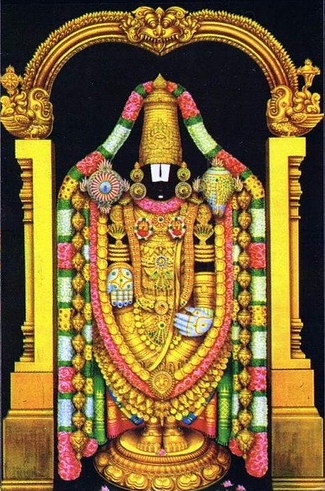
Devotees queue up to see this deity every day.
Every Tuesday as part of the second archana, this main deity with Sri Maha Lakshmi on his chest is offered Ashtadala Pada Padmaaraadhana with 108 gold lotuses. Every Thursday there will be Tiruppavada seva and Netra darshana (glimpse of Lord’s eyes) in the morning, and Poolangi seva (garlanding service) in the evening. In the early hours of every Friday, there will be Abhishekam (bathing with holy waters) to this deity with spices.
Click here to learn more about DHRUVA Beram.
KAUTUKA BERAM
This deity is called Bhoga Srinivasa Murthy or Manavalapperumal. The deity with four hands and disc and conch is a small replica of the main deity by all means. It appears this silver idol of 1.5 feet high was presented by Pallava Queen Samavai in 614 AD. It is always kept at the feet of the main deity of Lord Venkateshwara.
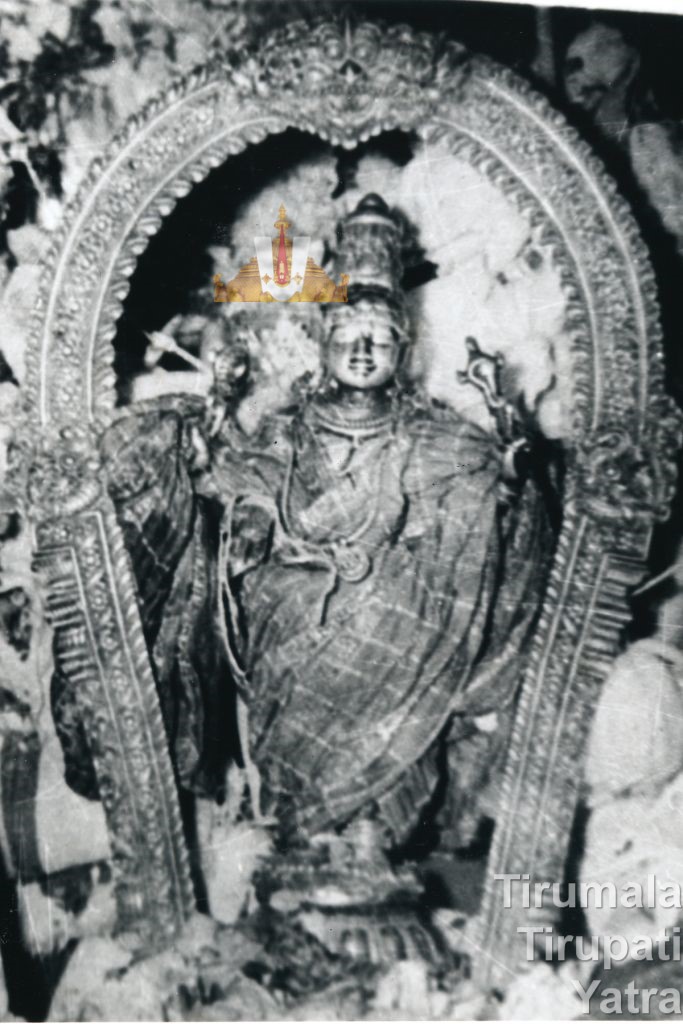
It is bathed with the holy waters of Akasha Ganga every day and with one thousand and eight silver vessels (Sahsra Kalashabhishekam) before the golden entrance every Wednesday morning. There will be Ekantha Seva or Pavalimpu Seva (Going to bed in privacy) every night for the deity. During Dhanurmasa (period of Tiruppavai vratham of Andaal), however, the deity is replaced with that of Lord Krishna with butter in his hand for this seva.
BALI BERAM
This idol is known as Koluvu Srinivasa Murthy or Lekhana Srinivasa Murthy. It is made of five precious metals and resembles the silver idol of Bhoga Srinivasa Murthy. A court (Koluvu) is held in the Snapana Mandapam on the golden throne supported by sculptured lions every day after Tomala Seva before the Archana.
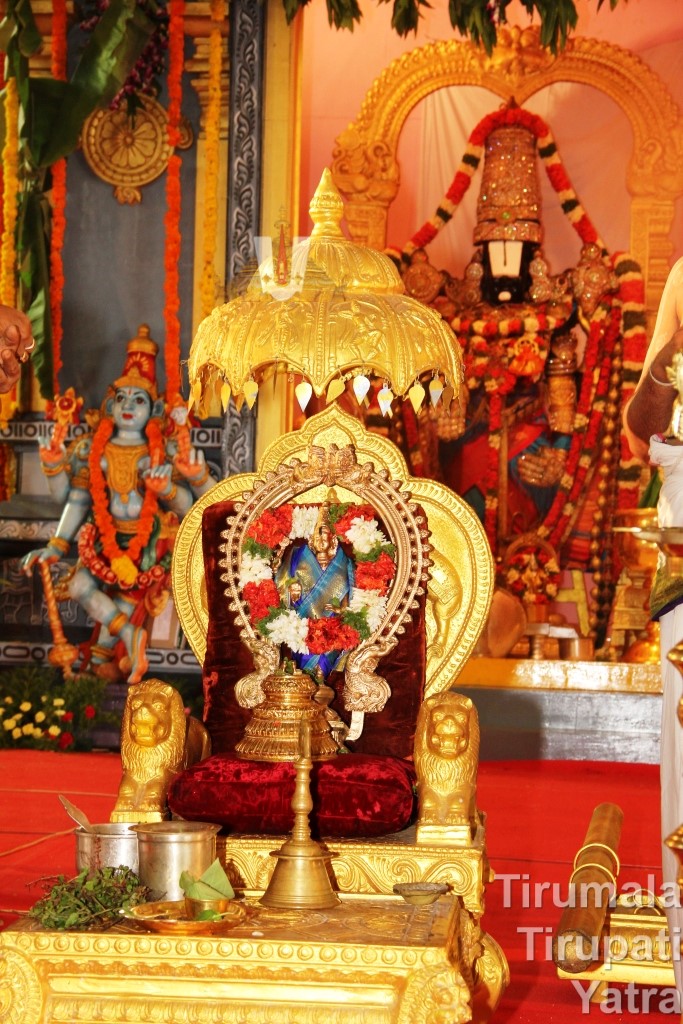
In this court, Koluvu Srinivasa Murthy is offered royal felicitations with chatra (the royal umbrella) and chamara (a fly-flap) befitting an emperor. The particulars of tithi (the number of the day in a month), vaara (weekday) and nakshatra (the presiding star) of the day are read from the Hindu Calendar (Panchanga Shravanam) along with the income and expenditure statement of the earlier day to this deity.
Koluvu Srinivasa Murthy is the supervising authority of the temple’s income and expenditure.
SNAPANA BERAM / Ugra Srinivasa Murthy
The Snapana Beram is also known as Ugra Srinivasa Murthy, Venkatatturaivar or Snapana Murthy. It is 25 inches high. The idols of Ugra Srinivasa Murthy along with Sri Devi and Bhu Devi are made of five precious metals.
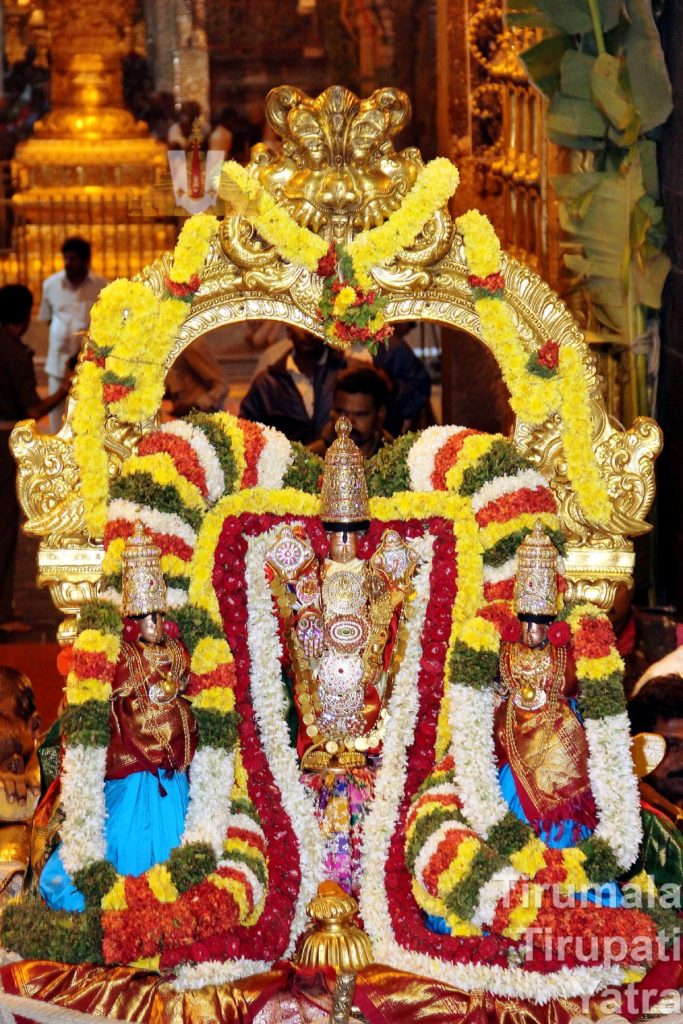
They were used for the utsavas in the past. This practice was dispensed with in the 14th century as some untoward incidents occurred in one of the Brahmotsavas. On Kaisika Dwadasi however, the procession of this deity is taken out from the temple early in the morning which ends much before sunrise.
UTSAVA BERAM
It is known as Malayappa Swamy or Utsava Srinivasa Murthy. There is a reference to it in 1339 AD.
This deity appears to the devotees in all the utsavas held outside the temple such as
- Nityotsavas (daily ceremonies),
- Varotsavas (weekly ceremonies),
- Masotsavas (monthly ceremonies) and
- Varshikotsavas (annual ceremonies).
It is also made of five precious metals and its height is about 30 inches. Since the idol was found in the Malayappa kona (a recess of Malayappa hill), it is called Malayappa Swami.
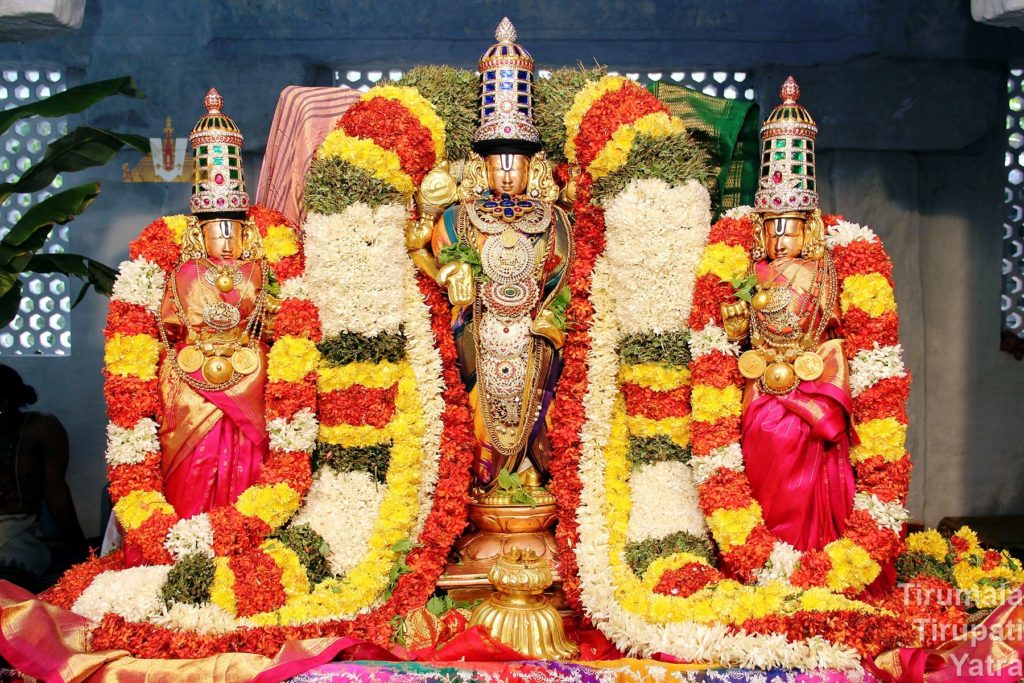
Besides the above idols, there are many other idols in the Ananda Nilayam such as –
- Sri Sudarshana Chakrattalwar,
- Sri Sita, Rama and Laxmana,
- Sri Rukmini and Sri Krishna,
- the retinue of Sri Venkateshwara Swamy such as
- (a) Anantha,
- (b) Vishwaksena
- (c) Garuthmantha, and
- the retinue of Sri Rama, viz –
- (a) Sugreeva,
- (b) Angada,
- (c) Ajnapalaka Anjaneya Swami, etc.
A few utsavas are conducted for these idols also.
